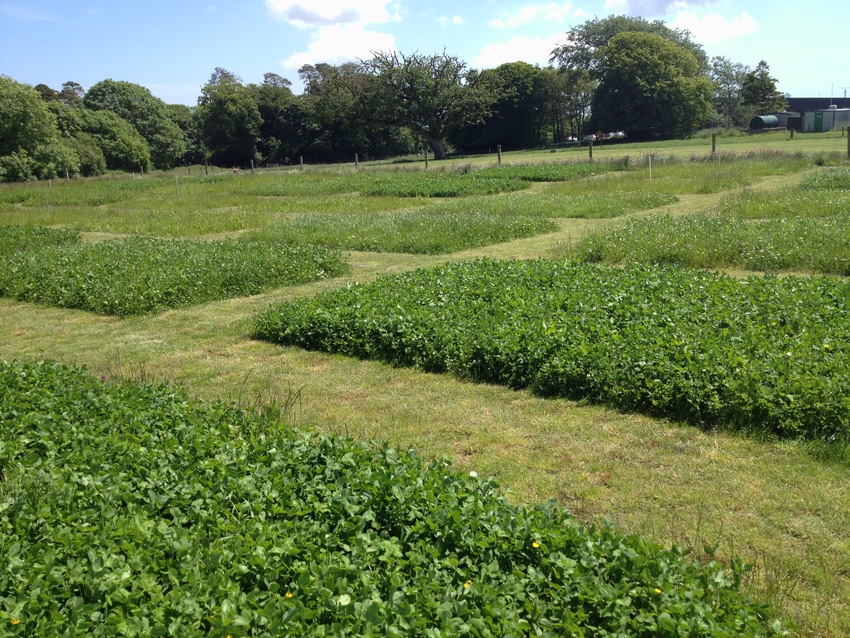Study finds multispecies grassland mixtures increase yield stability, even under drought conditions.
December 16, 2019

In a two-year experiment in Ireland and Switzerland, researchers found a positive relationship between plant diversity and yield stability in intensely managed grassland, even under experimental drought conditions. The results were recently presented at the British Ecological Society’s annual meeting in Belfast, Northern Ireland.
The benefits of multispecies mixtures were so strong that yields from a mixture of four species under drought conditions matched or exceeded yields for monocultures under normal rainfall conditions, the researchers said.
The four species tested were agriculturally important and used for grazing livestock in temperate regions: perennial ryegrass, chicory, red clover and white clover.
“Multispecies mixtures can be an effective, farm-scale practical action that could be used to mitigate or even adapt to the effects of severe weather events such as drought,” said Teagasc researcher Dr. John Finn, who presented this collaborative research with Agroscope Switzerland at the conference.
“When I first started talking about investigating effects of drought in Irish grassland in 2009, some of the farmers we spoke to thought I was crazy. There was more concern about winter waterlogging than summer drought,” Finn said. "Since then, however, we have had two serious summer droughts, most recently in 2018. All of the climate models indicate that summer droughts will become more frequent and more severe."
In Europe, this means that grasslands will be increasingly subjected to intense winter rain precipitation and summer droughts, the announcement said. Protecting yield stability through methods like increasing the species diversity in grassland systems will become increasingly important.
In this study, the effects of the experimental drought were substantial. However, compared to monocultures, higher yields in the four-species mixtures helped compensate for this reduction. In Ireland, across three harvests during and just after the drought period, the average monoculture yields of 1.41 metric tons per hectare in a harvest dropped to 1.08 mt due to drought; the multispecies mixture under drought yielded 1.3 mt per hectare, Finn reported.
In Switzerland, the average monoculture yields of 1.63 mt per hectare in a harvest dropped to 1.26 mt under drought, while the multispecies mixture under drought yielded 1.9 mt. In addition, the variation in yield decreased as plant diversity increased, he said.
The researchers sowed combinations of the four species in different plots to compare monocultures, two-species mixtures and four-species mixtures. Half of the plots (3 m x 5 m) were covered in rain shelters to create a severe drought event for nine weeks, the researchers said. This allowed them to compare the effects of plant diversity as well as drought on yield. A cutting regime was used to mimic grazing.
The research was performed across two sites in Ireland and Switzerland as part of AnimalChange, a European Union project aimed at developing scientific guidance on sustainable development for livestock production under climate change.
The researchers are now looking to extend the length of the study and test other factors. “Our experiment was sown in one year, and we applied treatments over the following two years. Ideally, we would like to continue the experiment for several years,” Finn said.
“We didn’t have a grazing treatment, and it would be important to confirm that the observed mixture benefits in a cutting regime would also occur under grazed conditions. This work is currently ongoing,” he added.
The researchers have also begun testing the effects of greater species diversity, expanding the tests from four crops to six, introducing timothy grass and plantain and looking more closely at levels of nitrogen fertilizer.
These results were published in Scientific Reports.
You May Also Like


.png?width=300&auto=webp&quality=80&disable=upscale)
